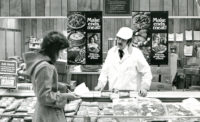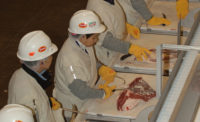NP's 125th Anniversary Coverage
The National Provisioner celebrates 125 years! (Part 2)
1917-1941: Acceleration & Depression
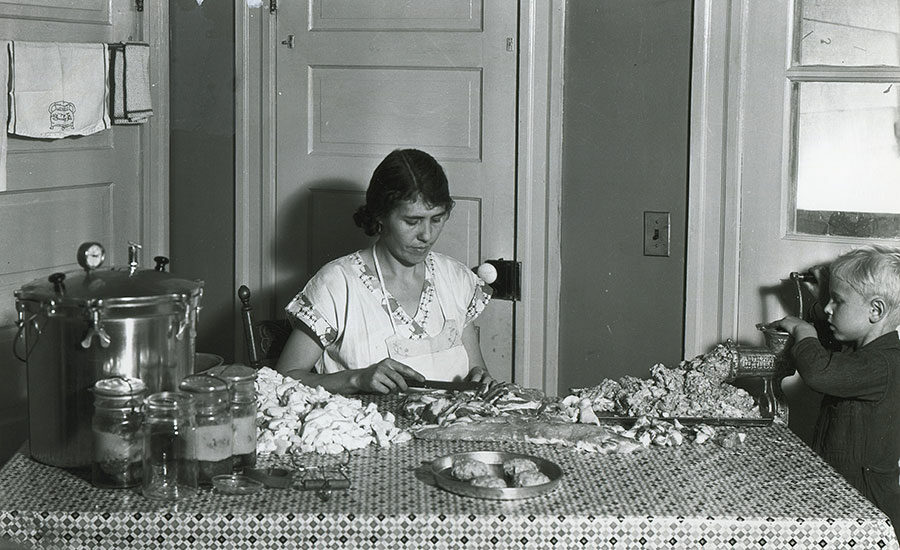
During the Great Depression, a woman and young child make sausage in their home from “the less-choice cuts of pork” in St. Mary’s County, Md., according to a National Archives photo from 1933.
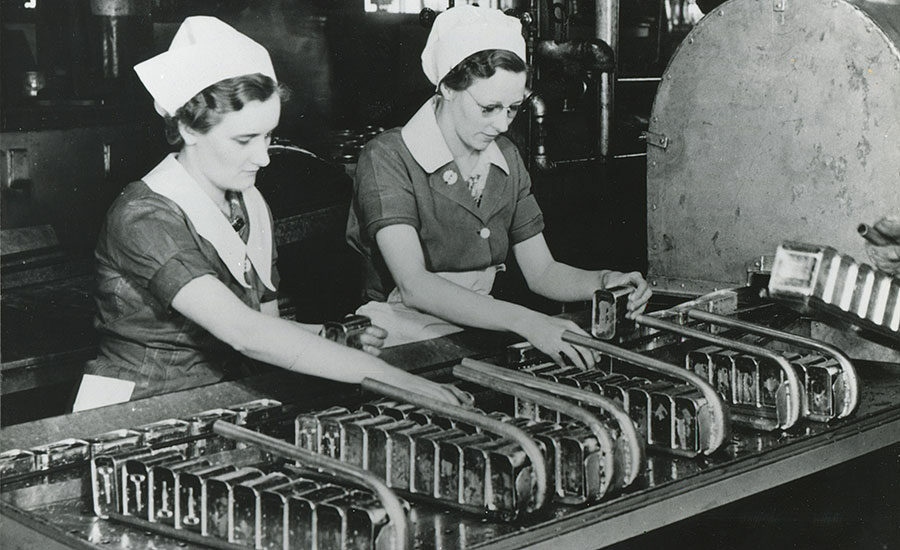
Hormel Foods employees on the SPAM production line in 1937, the year SPAM debuted, in Austin, Minn.
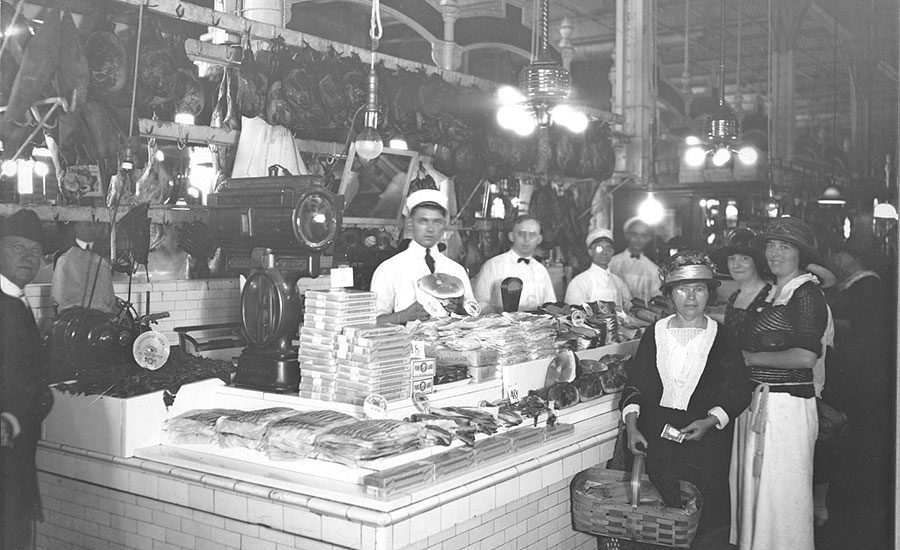
This photo from the National Archives shows a display of cured meats in a market circa 1922.
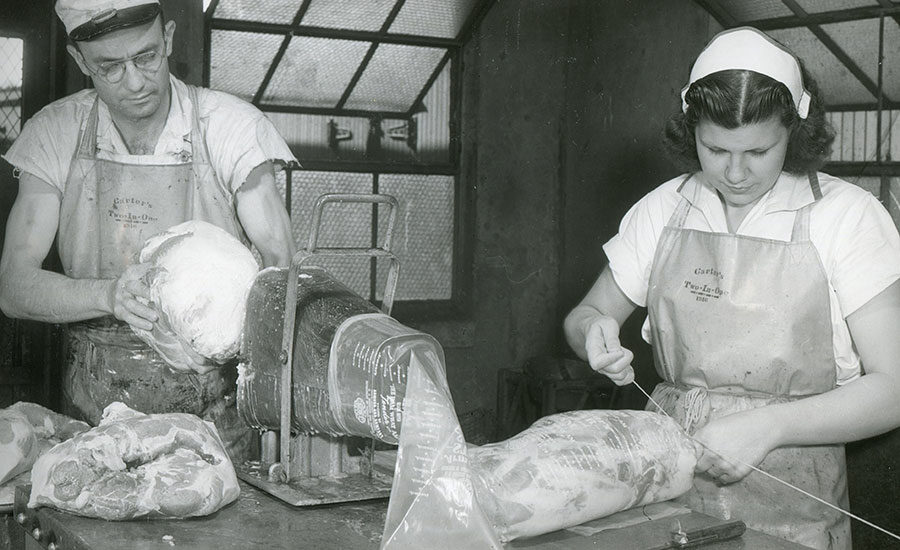
Armour employees prepare boneless hams for smoking, circa 1941.




Editor’s Note: The following is the second of six reports covering magazine highlights and major industry events during The National Provisioner’s 125 years in publishing.

As The National Provisioner (NP) entered its second 25 years in trade publishing, America’s population was booming while the meat industry continued automating to help meet growing demand. From 1917-1941, industry’s greatest challenge was arguably satisfying canned and frozen meat needs for U.S. and allied troops while also providing ample proteins for U.S. citizens and foreign customers during two world wars.
By the end of 1915, hostilities intensified in Europe as Austria-Hungary, Bulgaria, Germany and the Ottoman Empire battled Britain, France, Russia, Italy, Belgium, Serbia, Montenegro and Japan. When the U.S. entered World War 1 on April 6, 1917, its population was 103.4 million people.
Additional Content:
Meat Industry Timeline - View Now
Guest column by Jim Camillo - Read Now
Roller-coaster ride
Industry also weathered the Great Depression (1929-1939), livestock sources were in jeopardy as there were sometimes not enough animal feed stuffs or labor to farm and raise livestock.
“[But industry also witnessed] the birth of the modern U.S. poultry industry,” says Maureen Ogle, Ames, Iowa-based historian and author of In Meat We Trust, and other works. During the 1920s and 1930s, chicken meat production, previously a subsidiary of the egg industry, experienced the development of the broiler — a chicken raised specifically for its meat, reveals National Chicken Council archives. In 1920, commercial poultry men started crossing pure breeds to improve productive characteristics. And the first shipments of live chicken in railroad car lots destined for slaughter from production areas to big cities such as New York took place.
Meanwhile, advances in marketing, advertising and merchandising of meat products were being made. NP’s Jan. 15, 1938, issue covered the launch of an Institute of American Meat Packers-led industry initiative to promote meat consumption, which totaled 128 pounds in 1937 — up 3.5 pounds from 1936. (IAMP is now the North American Meat Institute.) The National Live Stock & Meat Board (NLS&MB), created in 1922, simultaneously conducted a three-month nationwide radio campaign to acquaint consumers with the “drastic decline in meat prices and the attractive values at what meat is now being offered for sale.”
From 1916 to 1941, NP increased coverage of new domestic and foreign slaughter and production plants. Editors routinely urged industry to continuously improve product quality, incorporate new plant design and to utilize innovative new equipment and packaging. News reports focused on new developments of the day, including dry ice (solid carbon dioxide), quick-freezing and stunning hogs electrically.
In 1920, the first self-service meat counters opened in retail stores. On Aug.4, 1930, Bethpage, N.Y.-based King Kullen Grocery Co. Inc., founded by Michael J. Cullen, became “America’s First Supermarket.” This chain currently operates 35 supermarkets around Long Island. Meat cuts also began appearing in smaller packaging during this cash-and-carry age.
Unusual stories were routinely published in NP as well. The July 20, 1929, issue covered how Vihjalmur Stephansson, arctic explorer, and fellow explorer Karsten Andersen lived for one year eating nothing but meat. The experiment was conducted at the Russell Sage Institute of Pathology on funds supplied by IAMP.
Turn the page
For 37 of the magazine’s first 50 years, Paul I. Aldrich was a driving force. Starting as managing editor in the early 1900s, he became NP editor, founder of the NP Daily Market service and ultimately president of The National Provisioner Inc. publishing company. In Feb. 1940, he retired as editor but remained president, handing the editor’s reins to J.B. Gray, former NP engineering editor.
By 1941, the weekly NP, which began as the “journal of record and information in the interest of packers, provision leaders, butchers, meat dealers, livestock dealers, poultry dealers and auxiliary industries,” gradually shifted its focus primarily to the meat packing and sausage manufacturing industries.
Magazine covers during this time were full-page supplier advertisements, while an enhanced layout included more photos with redesigned news, features, columns and a variety of weekly market reports. More pre- and post-show coverage for an increasing number of association conventions was published — sometimes resulting in some individual issues reaching nearly 300 pages, versus a standard issue page count of approximately 50 pages around that time.
NP’s second 25 years in business ended as it began — with the U.S. drawn into another world war following Japan’s attack on Pearl Harbor, Hawaii on Dec. 7, 1941. In both wars, the U.S. meat industry was immediately ready and able to help.
Shortly after the U.S. declared war on Japan, for example, the Chicago Quartermaster Depot received a requisition at 9:30 a.m. one day for 1 million pounds of frozen, boneless beef for shipment to the Far East. By 5 p.m. that day, the industry had responded, and that order was rolling toward San Francisco. NP
Looking for a reprint of this article?
From high-res PDFs to custom plaques, order your copy today!




